Two members of TaRLK family confer powdery mildew resistance in common wheat
- PMID: 26810982
- PMCID: PMC4727334
- DOI: 10.1186/s12870-016-0713-8
Two members of TaRLK family confer powdery mildew resistance in common wheat
Abstract
Background: Powdery mildew, caused by Blumeria graminearum f.sp. tritici (Bgt), is one of the most severe fungal diseases of wheat. The exploration and utilization of new gene resources is the most effective approach for the powdery mildew control.
Results: We report the cloning and functional analysis of two wheat LRR-RLKs from T. aestivum c.v. Prins- T. timopheevii introgression line IGV1-465, named TaRLK1 and TaRLK2, which play positive roles in regulating powdery mildew resistance in wheat. The two LRR-RLKs contain an ORF of 3,045 nucleotides, encoding a peptide of 1014 amino acids, with seven amino acids difference. Their predicted proteins possess a signal peptide, several LRRs, a trans-membrane domain, and a Ser/Thr protein kinase domain. In response to Bgt infection, the TaRLK1/2 expression is up-regulated in a developmental-stage-dependent manner. Single-cell transient over-expression and gene-silencing assays indicate that both genes positively regulate the resistance to mixed Bgt inoculums. Transgenic lines over-expressing TaRLK1 or TaRLK2 in a moderate powdery mildew susceptible wheat variety Yangmai 158 led to significantly enhanced powdery mildew resistance. Exogenous applied salicylic acid (SA) or hydrogen peroxide (H2O2) induced the expression of both genes, and H2O2 had a higher accumulation at the Bgt penetration sites in RLK over-expression transgenic plants, suggesting a possible involvement of SA and altered ROS homeostasis in the defense response to Bgt infection. The two LRR-RLKs are located in the long arm of wheat chromosome 2B, in which the powdery mildew resistance gene Pm6 is located, but in different regions.
Conclusions: Two members of TaRLK family were cloned from IGV1-465. TaRLK1 and TaRLK2 contribute to powdery mildew resistance of wheat, providing new resistance gene resources for wheat breeding.
Figures
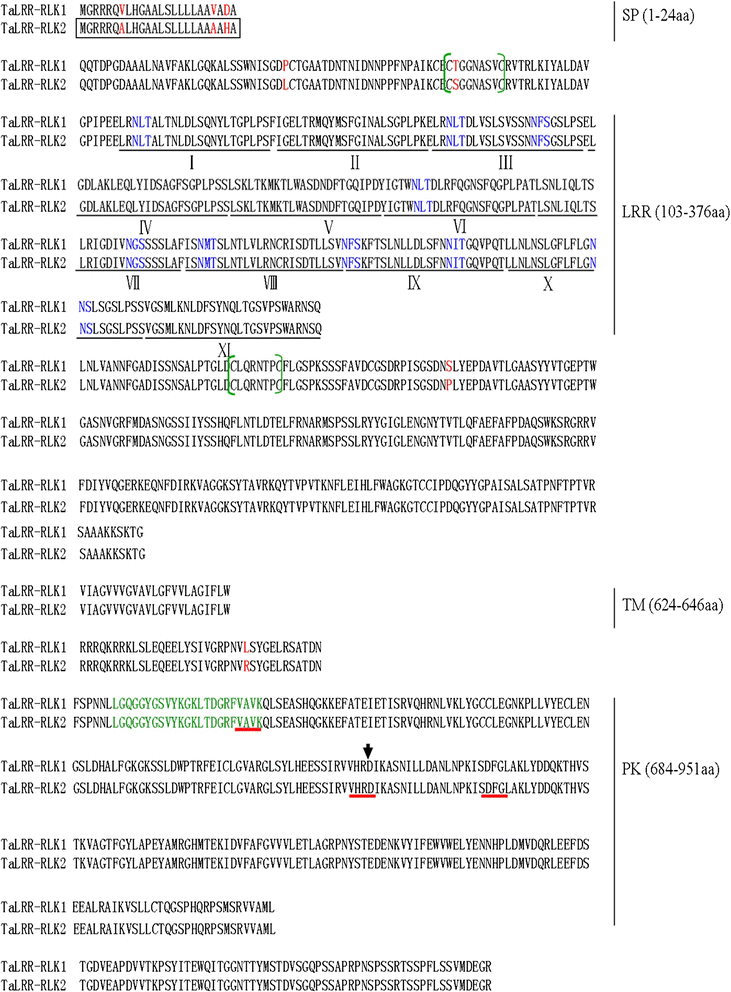
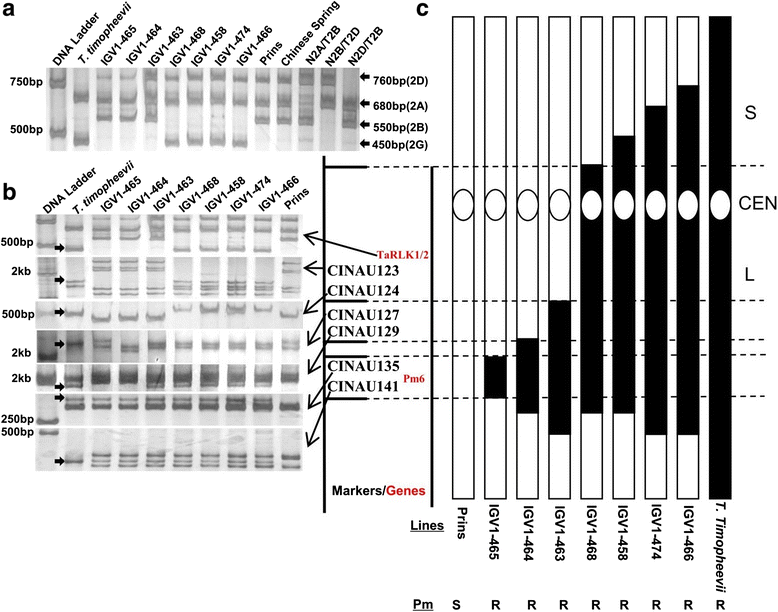
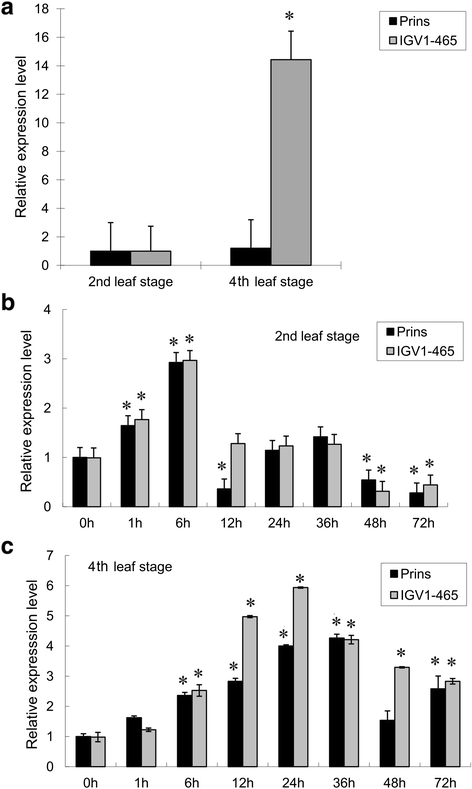
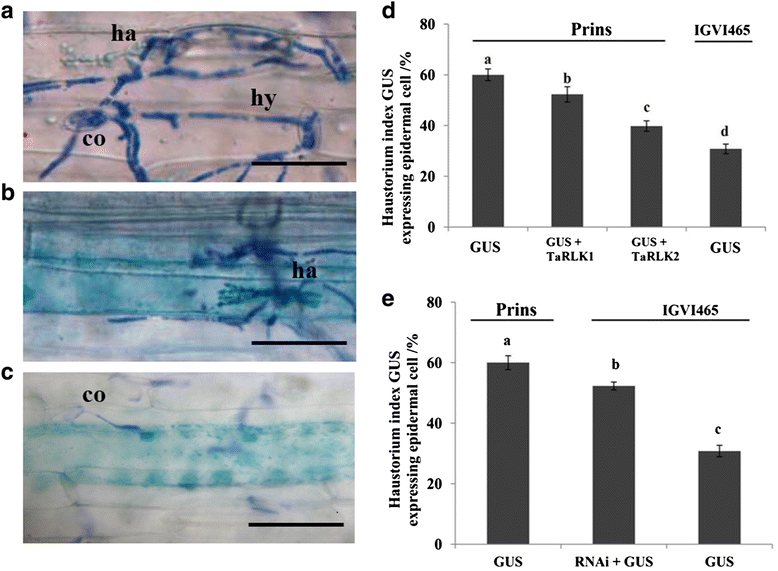
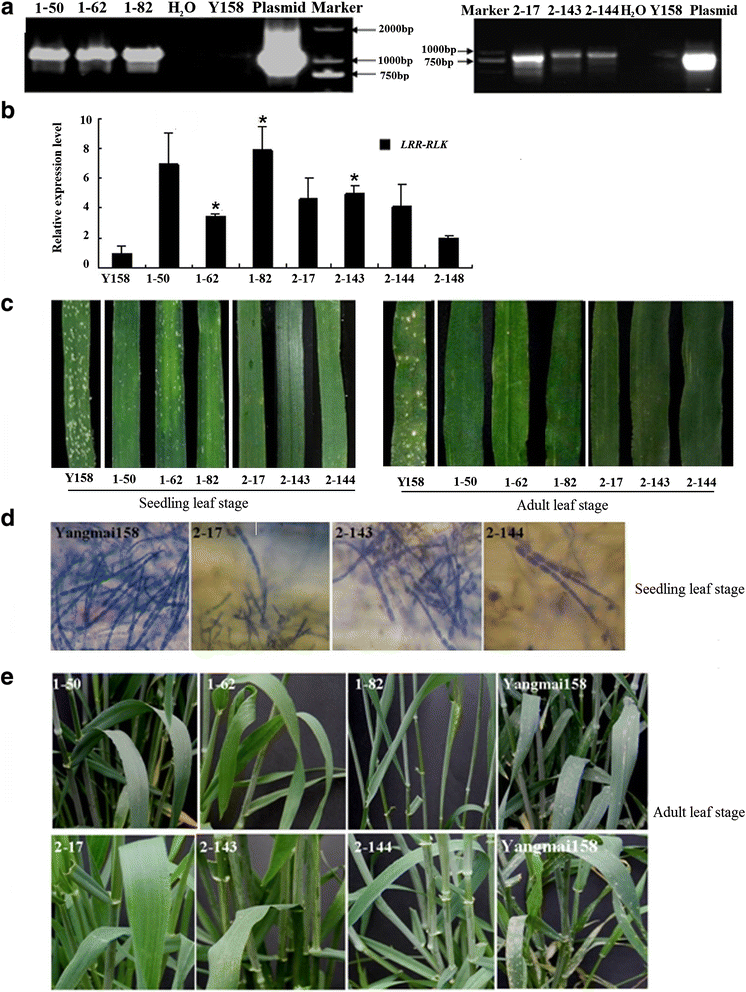
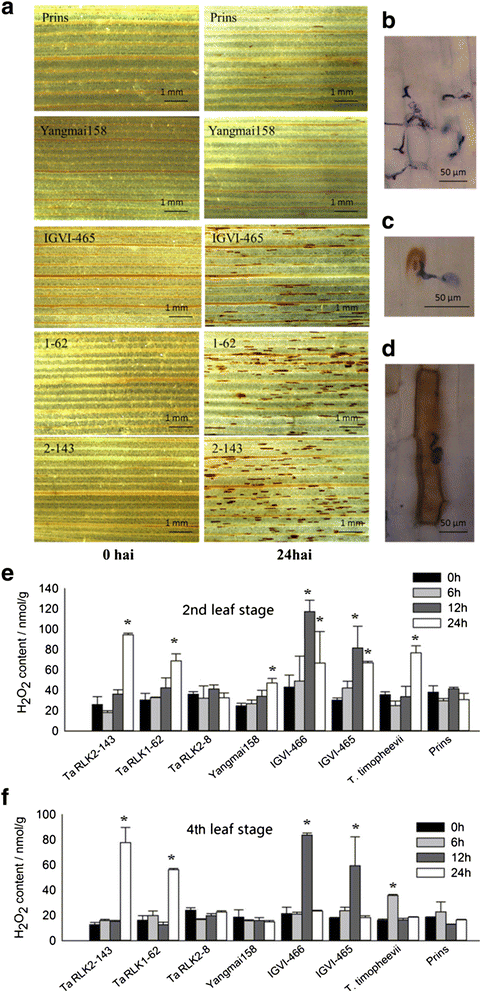
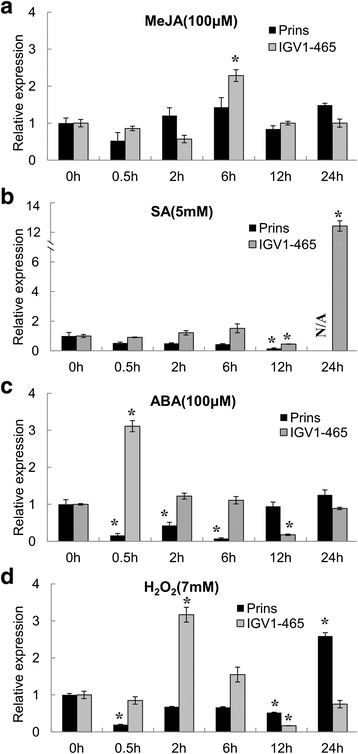
Similar articles
-
A malectin-like/leucine-rich repeat receptor protein kinase gene, RLK-V, regulates powdery mildew resistance in wheat.Mol Plant Pathol. 2018 Dec;19(12):2561-2574. doi: 10.1111/mpp.12729. Epub 2018 Oct 16. Mol Plant Pathol. 2018. PMID: 30030900 Free PMC article.
-
The NB-LRR gene Pm60 confers powdery mildew resistance in wheat.New Phytol. 2018 Apr;218(1):298-309. doi: 10.1111/nph.14964. Epub 2017 Dec 27. New Phytol. 2018. PMID: 29281751
-
TaRLK2.4, a transgressive expression receptor like kinase, improves powdery mildew resistance in wheat.Int J Biol Macromol. 2024 Oct;277(Pt 4):134387. doi: 10.1016/j.ijbiomac.2024.134387. Epub 2024 Aug 5. Int J Biol Macromol. 2024. PMID: 39111505
-
Transcriptome analysis of genes related to resistance against powdery mildew in wheat-Thinopyrum alien addition disomic line germplasm SN6306.Gene. 2016 Sep 15;590(1):5-17. doi: 10.1016/j.gene.2016.06.005. Epub 2016 Jun 2. Gene. 2016. PMID: 27265028 Review.
-
Combating powdery mildew: Advances in molecular interactions between Blumeria graminis f. sp. tritici and wheat.Front Plant Sci. 2022 Dec 16;13:1102908. doi: 10.3389/fpls.2022.1102908. eCollection 2022. Front Plant Sci. 2022. PMID: 36589137 Free PMC article. Review.
Cited by
-
Suppression of wheat TaCDK8/TaWIN1 interaction negatively affects germination of Blumeria graminis f.sp. tritici by interfering with very-long-chain aldehyde biosynthesis.Plant Mol Biol. 2018 Jan;96(1-2):165-178. doi: 10.1007/s11103-017-0687-4. Epub 2017 Dec 2. Plant Mol Biol. 2018. PMID: 29197938
-
Mining for New Sources of Resistance to Powdery Mildew in Genetic Resources of Winter Wheat.Front Plant Sci. 2022 Mar 1;13:836723. doi: 10.3389/fpls.2022.836723. eCollection 2022. Front Plant Sci. 2022. PMID: 35300015 Free PMC article.
-
TaSYP137 and TaVAMP723, the SNAREs Proteins from Wheat, Reduce Resistance to Blumeria graminis f. sp. tritici.Int J Mol Sci. 2023 Mar 2;24(5):4830. doi: 10.3390/ijms24054830. Int J Mol Sci. 2023. PMID: 36902258 Free PMC article.
-
Discovery of broad-spectrum fungicides that block septin-dependent infection processes of pathogenic fungi.Nat Microbiol. 2020 Dec;5(12):1565-1575. doi: 10.1038/s41564-020-00790-y. Epub 2020 Sep 21. Nat Microbiol. 2020. PMID: 32958858
-
A malectin-like/leucine-rich repeat receptor protein kinase gene, RLK-V, regulates powdery mildew resistance in wheat.Mol Plant Pathol. 2018 Dec;19(12):2561-2574. doi: 10.1111/mpp.12729. Epub 2018 Oct 16. Mol Plant Pathol. 2018. PMID: 30030900 Free PMC article.
References
-
- Hervé C, Serres J, Dabos P, Canut H, Barre A, Rougé P, et al. Characterization of the Arabidopsis lecRK-a genes: members of a superfamily encoding putative receptors with an extracellular domain homologous to legume lectins. Plant Mol Biol. 1999;39(4):671–682. doi: 10.1023/A:1006136701595. - DOI - PubMed
Publication types
MeSH terms
Substances
LinkOut - more resources
Full Text Sources
Other Literature Sources

